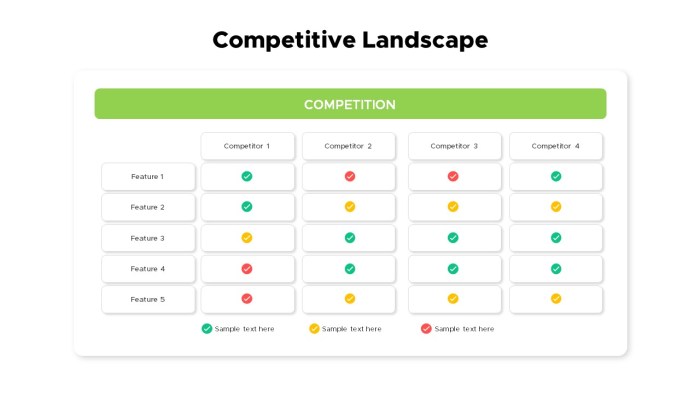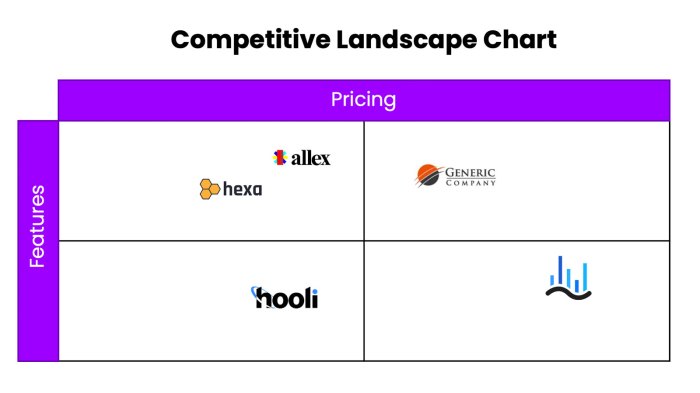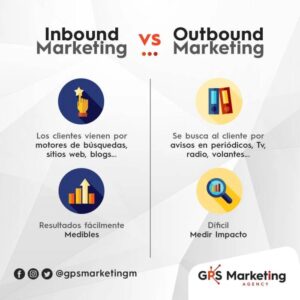
Competitive market analysis dives into the intricate web of market structures and strategies that define business success. It highlights the significance of understanding competition, allowing businesses to tailor their approaches in an ever-evolving landscape. By examining various market structures like perfect competition, monopolistic competition, oligopoly, and monopoly, we unveil how these frameworks impact business strategies and market share.
Moreover, the analysis provides insights into the tools and techniques essential for effective market research, emphasizing how modern marketing software can enhance the research process. With a structured approach to surveys and focus groups, businesses can gather invaluable data to refine their strategies. Finally, effective communication strategies in competitive markets shed light on how public relations and various channels can shape consumer perception and influence market positioning.
Competitive Market Overview

The competitive market is a crucial framework in economics that defines how businesses interact and compete with one another. Understanding this landscape is essential for organizations aiming to strategize effectively in their respective markets. A competitive market influences pricing, product offerings, and overall business viability, making it vital for businesses to comprehend its dynamics.A competitive market can be characterized by the degree of competition among firms, which can significantly impact their market strategies and profitability.
The main structures within competitive markets include perfect competition, monopolistic competition, oligopoly, and monopoly. Each structure presents unique characteristics, influencing how companies operate and compete.
Comparison of Competitive Market Structures
The following sections detail the various competitive market structures, highlighting their distinct features and implications for businesses.
- Perfect Competition: This structure consists of numerous small firms that sell identical products. No single firm can influence market prices, leading to an efficient allocation of resources. Examples include agricultural markets, where farmers sell similar crops.
- Monopolistic Competition: Characterized by many firms that sell products that are similar but not identical, allowing for some degree of pricing power. Companies often compete through marketing and product differentiation. Fast food chains exemplify this structure, each offering unique menus while competing for the same customer base.
- Oligopoly: In an oligopolistic market, a small number of firms dominate, leading to potential collaboration or fierce competition. These firms are interdependent, meaning the actions of one can significantly impact the others. The airline industry is a prime example, where a few major companies control the majority of market share.
- Monopoly: This occurs when a single firm controls the entire market, often leading to higher prices and decreased product availability. Monopolies can arise due to unique resources, government regulation, or technological superiority. A classic example is a utility company, where one provider often serves an entire region.
Market Share and Its Impact on Business Strategy
Market share refers to the percentage of total sales in a market that is owned by a particular company. An increase in market share can lead to economies of scale, reduced costs, and improved profitability. Companies often strive to enhance their market share to gain a competitive edge and establish themselves as market leaders.Businesses utilize various strategies to increase their market share, including pricing strategies, advertising, and product innovation.
For instance, a company may lower its prices to attract customers from competitors, or invest in innovative product features to stand out in a saturated market. Additionally, monitoring market share can provide insights into competitive dynamics and customer preferences, informing future business decisions.
“The greater the market share, the stronger the position of the firm in the competitive landscape.”
Tools and Techniques for Market Research
Conducting effective market research is essential for understanding consumer behavior, market trends, and competitive landscapes. It equips businesses with the insights needed to make informed decisions and improve their strategies. The tools and techniques available today can significantly enhance the efficiency and accuracy of market research efforts.To streamline the market research process, various methods can be employed. These include both traditional approaches and modern digital tools that facilitate data gathering and analysis.
Marketing software plays a pivotal role in this ecosystem, offering innovative solutions that can optimize research workflows.
Methods Used for Conducting Market Research
Several methods are commonly used for conducting market research, each tailored to gather specific insights effectively. These approaches can be categorized into primary and secondary research methods.
- Surveys: Utilizing questionnaires to gather quantitative data from a target audience, surveys can be conducted online, via phone, or in person.
- Interviews: One-on-one conversations that provide in-depth qualitative insights, helping to understand consumer motivations and perceptions.
- Focus Groups: Facilitated discussions with a small group of people, allowing for the exploration of ideas and feedback on products or concepts.
- Observational Research: Involves monitoring consumer behavior in a natural setting to gather data on how they interact with products or services.
- Market Analysis Reports: Utilizing existing research and reports to understand industry trends and competitive landscapes.
Utilization of Marketing Software in Market Research
Marketing software has transformed the way businesses conduct market research. By leveraging technology, companies can enhance their research capabilities significantly. The integration of various tools simplifies data collection and analysis processes, providing valuable insights more efficiently.
“Marketing software not only saves time but also increases the accuracy of research findings.”
Examples of how marketing software can facilitate market research include:
- Data Analytics Tools: Platforms like Google Analytics allow businesses to track user behavior and engagement on their websites, providing insights into customer preferences.
- Survey Platforms: Tools such as SurveyMonkey or Qualtrics streamline the survey creation process, enabling quick distribution and analysis of responses.
- CRM Systems: Customer Relationship Management software helps in organizing and analyzing customer data, revealing trends and relationship patterns.
- Social Media Analytics: Tools like Hootsuite or Sprout Social analyze social media interactions, providing insights into brand perception and customer sentiment.
Framework for Surveys and Focus Groups
Designing a structured framework for surveys and focus groups is essential for obtaining reliable data. A well-thought-out approach ensures that the objectives of the research are met effectively.For surveys, consider the following framework:
- Define Objectives: Clearly Artikel the purpose of the survey and the specific information needed.
- Identify Target Audience: Determine who will be surveyed to ensure relevant data collection.
- Question Design: Craft questions that are clear, concise, and unbiased to elicit accurate responses.
- Distribution Method: Choose the most effective channel for reaching your audience, whether online, email, or paper-based.
- Data Analysis: Analyze collected data using statistical tools or software to derive meaningful insights.
For focus groups, the framework involves:
- Objective Setting: Define what information you hope to gather from the focus group discussions.
- Participant Selection: Assemble a diverse group that represents the target market for balanced insights.
- Discussion Guide: Prepare a guide with key topics and questions to steer the conversation while allowing for open dialogue.
- Facilitation: Choose a skilled facilitator to lead the discussion, encourage participation, and maintain focus on the objectives.
- Analysis and Reporting: Document the findings and analyze the discussions to extract themes and insights that inform decision-making.
Communication Strategies in Competitive Markets
In the ever-evolving landscape of competitive markets, effective communication strategies are crucial for brands looking to differentiate themselves and establish a strong presence. The way businesses communicate with their target audiences can significantly influence consumer perception, enhance brand loyalty, and ultimately drive sales. This segment delves into various communication strategies, highlighting the role of public relations, telemarketing, and the effectiveness of different channels.
Influence of Public Relations on Consumer Perception
Public relations (PR) plays a pivotal role in shaping consumer perceptions within competitive markets. It involves managing the information disseminated to the public and the media to build a favorable image for a brand. The effectiveness of PR can be seen in several key areas:
- Brand Storytelling: Crafting compelling brand narratives can resonate emotionally with consumers, turning them into advocates.
- Media Relations: Building strong connections with journalists and influencers helps ensure positive coverage, which can enhance credibility.
- Crisis Management: Swift and effective communication during a crisis can mitigate damage to brand reputation and maintain consumer trust.
- Community Engagement: Participating in community activities or causes can improve brand perception and foster loyalty among consumers.
“Effective public relations not only communicates what a brand does but also establishes why it matters to consumers.”
Effectiveness of Telemarketing as a Communication Strategy
Telemarketing remains a practical strategy for reaching target audiences, particularly in industries where personalized communication is vital. This direct approach allows brands to engage with potential customers through voice interactions. Some notable advantages of telemarketing include:
- Personalized Engagement: Direct conversations enable tailored pitches that align with consumer needs and preferences.
- Immediate Feedback: Telemarketers can gauge consumer reactions in real-time, allowing for adjustments in sales tactics.
- Relationship Building: Establishing a rapport with prospects can lead to improved customer loyalty and higher conversion rates.
- Cost-Effectiveness: Compared to traditional advertising channels, telemarketing can be more economical while providing direct access to targeted demographics.
“Telemarketing, when done right, can turn cold leads into warm prospects through personal interaction.”
Comparison of Communication Channels and Their Impact on Market Positioning
In competitive markets, the choice of communication channels is integral to market positioning. Different channels offer unique advantages and resonate differently with target audiences. The following comparison highlights various communication channels and their potential impact:
- Social Media: Provides real-time engagement and the ability to reach a vast audience quickly, ideal for building brand awareness.
- Email Marketing: Allows for targeted messaging and personalization, which can nurture leads and maintain customer relationships.
- Content Marketing: Establishes authority and trust through valuable content, enhancing brand positioning as a thought leader.
- Traditional Advertising: Still effective for broad reach, particularly in specific demographic markets, though often more costly.
“Selecting the right communication channel is essential for aligning brand messaging with target audience expectations.”
Final Wrap-Up

In summary, competitive market analysis is a crucial pillar for any business aiming to thrive in a crowded landscape. By understanding market structures, employing the right research techniques, and leveraging communication strategies, companies can position themselves for success. Keeping an eye on competition and adapting to market dynamics is not just beneficial; it’s essential for sustainable growth and profitability.
FAQ Explained
What is a competitive market analysis?
A competitive market analysis is a process of assessing the competitive landscape within an industry, identifying competitors, and understanding their strengths and weaknesses.
Why is market share important?
Market share indicates a company’s portion of total sales in its industry and is crucial for evaluating its competitiveness and growth potential.
What tools can I use for market research?
Common tools include surveys, focus groups, online analytics platforms, and marketing software designed to streamline the research process.
How can public relations influence competitive markets?
Public relations can shape consumer perceptions and build brand reputation, making it a powerful tool for differentiation in competitive markets.
What are the different market structures?
Market structures include perfect competition, monopolistic competition, oligopoly, and monopoly, each with distinct characteristics influencing business behavior.






